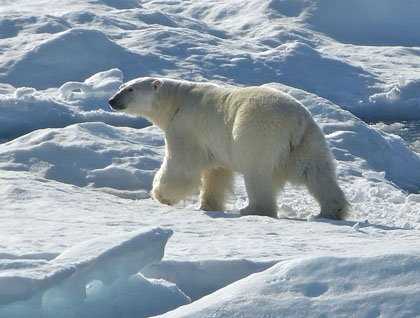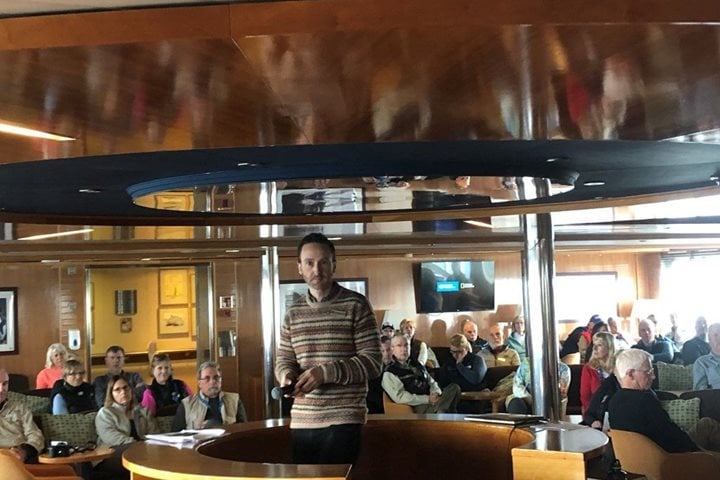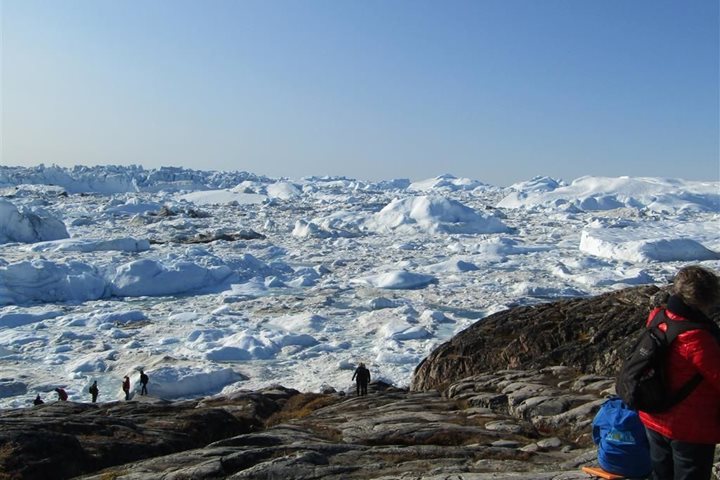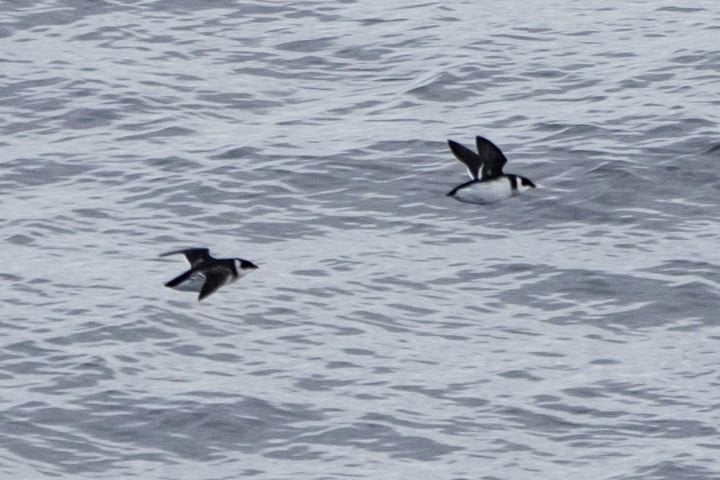The Scandinavian name for the white bear that lives in the North is Isbjörn: the ice bear. It is an appropriate name, for the bear spends most of its life and gathers most of its food on the northern sea ice. The first two bears of our voyage were spotted on land, where bears retreat when there is no sea ice to be found. (I am happy to report that the first bear was spotted by an attentive guest.) Our ice chart told us where we should find sea ice, drifting south on the Labrador Current near Cape Hoare off the Baffin Island coast. As predicted, there we found the ice, and there we found the bears. Boy, did we find bears. And then the bears found us.
With an extra layer of steel around the waterline, National Geographic Explorer is the perfect vessel to push into the pack ice for close looks at the bears. At one point, we could see at least six of them scattered over the ice around us. Some were resting quietly; others were ambling over the ice seeking a seal for their next meal. Polar bears have no predators on the ice, nothing to fear except another polar bear. Males will kill and eat cubs, so females are wary of males. Large males dominate smaller bears, so the smaller avoids the larger. Beyond that, they show little fear response.
Usually, the bears are well aware of our presence and keep their distance, but sometimes a curious bear approaches the ship. We watch and hope for such an encounter, and today it happened. A swimming bear climbed out onto the ice and came right to the ship. It happened three times in quick succession. Each time the new arrival supplanted the previous. They seemed to have the local social order well established: bigger dominates smaller, reinforced with a growl and a quick nip when necessary. For the smaller bear, discretion says retreat and live to fight (and, hopefully, breed) another day. Scarring, particularly around the face of the oldest, largest bear indicate that disputes are not always peacefully resolved.
We ran from side to side of our ship as the bears explored us from all angles. New and creative camera angles were invented as images were recorded on cameras large and small. Finally, the bear shown here took a short swim, emerged onto the ice, and engaged in an extended bout of rolling in the snow to remove salt and, perhaps, seal fat from its off-white fur. An incredible encounter with the master of the northern ice here in the Canadian Arctic.







